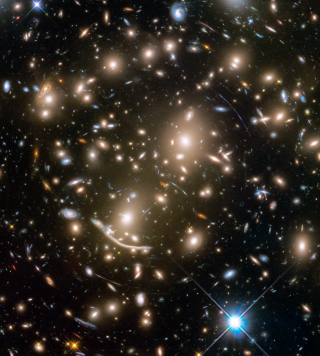Bibcode
Rowlands, Kate; Pawlik, Milena; Mendez-Abreu, Jairo; Wild, Vivienne; Villforth, Carolin; Hewlett, Timothy
Referencia bibliográfica
Monthly Notices of the Royal Astronomical Society, Volume 470, Issue 1, p.755-770
Fecha de publicación:
9
2017
Número de citas
47
Número de citas referidas
46
Descripción
Active galactic nuclei (AGNs), particularly the most luminous AGNs, are
commonly assumed to be triggered through major mergers; however,
observational evidence for this scenario is mixed. To investigate any
influence of galaxy mergers on AGN triggering and luminosities through
cosmic time, we present a sample of 106 luminous X-ray-selected type 1
AGNs from the COSMOS survey. These AGNs occupy a large redshift range
(0.5 < z < 2.2) and two orders of magnitude in X-ray luminosity
(˜1043-1045 erg s-1). AGN hosts
are carefully mass and redshift matched to 486 control galaxies. A novel
technique for identifying and quantifying merger features in galaxies is
developed, subtracting galfit galaxy models and quantifying the
residuals. Comparison to visual classification confirms this measure
reliably picks out disturbance features in galaxies. No enhancement of
merger features with increasing AGN luminosity is found with this
metric, or by visual inspection. We analyse the redshift evolution of
AGNs associated with galaxy mergers and find no merger enhancement in
lower redshift bins. Contrarily, in the highest redshift bin (z ˜
2) AGNs are ˜4 times more likely to be in galaxies exhibiting
evidence of morphological disturbance compared to control galaxies, at
99 per cent confidence level (˜2.4σ) from visual inspection.
Since only ˜15 per cent of these AGNs are found to be in
morphologically disturbed galaxies, it is implied that major mergers at
high redshift make a noticeable but subdominant contribution to AGN
fuelling. At low redshifts, other processes dominate and mergers become
a less significant triggering mechanism.
Proyectos relacionados

Evolución de Galaxias en Cúmulos
Las estructuras en el Universo, a todas las escalas de masa, se han formado de una forma jerárquica y principalmente producidas por fusiones de galaxias. Sin embargo, esta formación jerárquica de las galaxias está modulada por el entorno en el cual se crean y evolucionan. Mientras que las galaxias de campo presentan una evolución pasiva, los
Jairo
Méndez Abreu